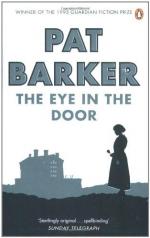|
This section contains 997 words (approx. 3 pages at 400 words per page) |

|
Point of View
The entire narrative is told from the point of view of an omniscient narrator. In this instance, the narrator is objective and detached. That is to say, the omniscient narrator offers no opinion concerning the actions of the characters in the story. The use of an omniscient narrator in The Eye in the Door allows for a more comprehensive overview of the larger issues at play in the story. As it stands, matters such as homophobia, war trauma, women's suffrage, and class conflict are all given equal weight in the novel because the narrator is not a character in the story. Had the author chosen one of the characters to narrate the story, those issues may have been overshadowed by character development in the form of additional dialogue and back-story.
Furthermore, since the novel deals with a very specific historical moment, the voice of the omniscient...
|
This section contains 997 words (approx. 3 pages at 400 words per page) |

|




